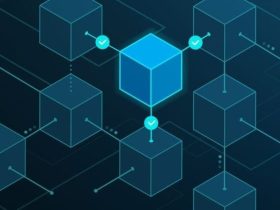In today’s volatile threat landscape, cybersecurity leaders must balance rapid innovation with ever-evolving adversary tactics. From advanced AI-driven defenses and high-stakes acquisitions to novel attack surfaces and operational challenges in Security Operations Centers (SOCs), the industry is in constant flux. In this edition of Cybersecurity Roundup, we examine five pivotal developments shaping the sector on April 29, 2025:
-
NVIDIA DOCA Argus brings runtime threat detection to AI factories.
-
Trend Micro unveils AI-powered threat detection on AWS with NVIDIA integration.
-
Palo Alto Networks moves to acquire Protect AI and expand its AI security portfolio.
-
IBM launches Autonomous Threat Operations Machine (ATOM) and Predictive Threat Intelligence (PTI).
-
SOCRadar introduces its Copilot AI assistant to streamline SOC workflows.
We deliver concise yet detailed coverage of each story, followed by expert commentary on their implications for cybersecurity strategy, operations, and market dynamics.
1. NVIDIA DOCA Argus: Securing the AI Factory at Scale
As organizations rush to build “AI factories” — integrated environments where large-scale, agentic AI workflows run in production — security has emerged as a critical bottleneck. On April 28, 2025, NVIDIA introduced DOCA Argus, a software framework that brings agentless, runtime threat detection to every node in an AI compute fabric. DOCA Argus leverages advanced memory forensics on NVIDIA BlueField Data Processing Units (DPUs) to monitor AI workloads in real time, delivering detection speeds up to 1,000× faster than traditional agentless approaches — all without impacting host performance. By operating outside the host OS, Argus remains invisible to attackers and integrates seamlessly with SIEM, SOAR, and XDR platforms for immediate threat insights. A collaboration with Cisco ensures that “Secure AI Factory” reference architectures embed DOCA Argus at every layer.
Opinion: As AI workloads handle increasingly sensitive data, from customer PII to proprietary model weights, the attack surface broadens dramatically. DOCA Argus represents a paradigm shift: rather than bolting security onto AI systems post-deployment, it embeds inspection and response capabilities directly within the network fabric. This approach not only reduces blind spots in containerized and multi-tenant environments but also elevates cybersecurity to a first-class citizen in AI infrastructure. Organizations that fail to adopt hardware-accelerated, data-centric security risk exposing mission-critical workflows to sophisticated adversaries.
Source: NVIDIA Blog
2. Trend Micro’s AI-Powered Threat Detection: AWS & NVIDIA Integration
On April 28, 2025, Trend Micro announced a new AI-driven threat detection platform built on AWS cloud infrastructure and integrated with NVIDIA’s Morpheus AI framework. By combining Trend’s deep security expertise with NVIDIA AI Enterprise software and scalable AWS services, the solution delivers real-time analysis of telemetry data streams, anomaly detection via digital fingerprinting, and large-scale data classification through NVIDIA RAPIDS. Enterprises gain a turnkey offering that can process network, endpoint, and cloud workload logs at scale, adapt detection models dynamically, and integrate with existing cloud-native security operations.
Opinion: As businesses increasingly deploy AI in production, protecting AI-powered pipelines becomes paramount. Trend Micro’s alliance with AWS and NVIDIA accelerates time-to-value for AI-native security deployments, offering a fully managed service that reduces infrastructure friction. For CISOs, this multi-vendor collaboration provides confidence: AWS ensures global scalability, NVIDIA supplies GPU-accelerated inference, and Trend Micro brings proven threat intelligence. The move underscores a broader trend toward co-innovation partnerships, where hyperscalers, chipmakers, and security vendors converge to deliver integrated solutions.
Source: PR Newswire
3. Palo Alto Networks Acquires Protect AI: Betting Big on AI Security M&A
In a deal valued above $500 million and announced April 28, Palo Alto Networks will acquire Seattle-based Protect AI — a 2022 startup specializing in securing machine learning systems across their entire lifecycle. Protect AI’s platform monitors data pipelines, model behavior, and inference requests for anomalies, serving Fortune 500 clients in finance, healthcare, and government. The acquisition follows Protect AI’s $60 million Series B in 2024 at a $400 million valuation. Palo Alto also unveiled Prisma AIRS, its new AI security platform designed to protect the dynamic attack surfaces introduced by AI adoption.
Opinion: This acquisition marks the latest in a surge of cybersecurity M&A focused on AI assurance. As AI models become mission-critical, risks ranging from data poisoning to adversarial exploits demand specialized safeguarding. By folding Protect AI’s capabilities into its Next-Gen Firewalls and Cortex XDR suite, Palo Alto positions itself to offer end-to-end protection for AI workloads. The deal also signals robust investor appetite for startups addressing AI-specific security challenges. Expect further consolidation as incumbents seek to fill gaps in model security, data integrity, and automated incident response.
Source: GeekWire
4. IBM’s ATOM & PTI: Pioneering Autonomous Security Operations
IBM’s April 28 announcement unveiled two transformative services within its Threat Detection and Response (TDR) portfolio: the Autonomous Threat Operations Machine (ATOM) and X-Force Predictive Threat Intelligence (PTI). ATOM is an agentic AI framework that orchestrates specialized agents to autonomously triage, investigate, and remediate threats with minimal human intervention. Integrated across vendor-agnostic environments — including Google Cloud and Microsoft — ATOM accelerates detection and reduces false positives. Complementing ATOM, PTI leverages proprietary AI foundation models and over 100 threat feeds to forecast adversary behavior, delivering proactive intelligence that shifts SOCs from reactive defense to predictive operations.
Opinion: IBM’s dual launch addresses two perennial cybersecurity challenges: alert fatigue and talent shortages. By automating routine SOC tasks and surfacing tailored threat-hunting queries, IBM empowers security teams to focus on high-impact incidents. The vendor-agnostic design is particularly strategic, as enterprises juggle heterogeneous security stacks. Moreover, predictive intelligence that emphasizes indicators of behavior could redefine how organizations prioritize threats. IBM’s move cements agentic AI as the next frontier in SOC automation, forcing competitors to accelerate their own autonomous-security roadmaps.
Source: PR Newswire
5. SOCRadar Copilot: AI Assistant for Security Operations
At RSAC 2025, SOCRadar launched Copilot, an AI-powered assistant designed to streamline cybersecurity operations and alleviate SOC burnout. Available in “Light” and “Pro” tiers starting May 2025, Copilot integrates three core modules:
-
AI-Powered Help & Insights: Contextual recommendations and intelligence support for rapid investigations.
-
Smart Task Automation: Customizable workflows automate repetitive tasks such as enrichment and correlation.
-
Alarm Noise Reduction: AI filtering reduces false positives, elevating genuine threats.
With embedded AI insights across threat intelligence, vulnerability management, dark-web monitoring, and supply chain analysis, Copilot aims to transform reactive SOCs into proactive hunt teams.
Opinion: SOC analysts are drowning in alert volumes, and solutions like Copilot could be a game-changer. By embedding an AI assistant that not only answers questions but also executes tasks autonomously, SOCRadar addresses both efficiency and morale. As the model matures, integration with XDR platforms and broader security ecosystems will be crucial. Copilot’s success will hinge on its ability to accurately interpret context — a known challenge in AI-driven security tools — and its flexibility to adapt to customer-specific playbooks.
Source: MSSP Alert
Emerging Themes and Strategic Implications
-
Hardware-Accelerated Security: NVIDIA’s DOCA Argus and Trend Micro’s GPU-powered models emphasize that hardware-level integration is key to securing AI workloads without sacrificing performance.
-
Co-Innovation Partnerships: The AWS–Trend Micro–NVIDIA collaboration and IBM’s vendor-agnostic ATOM illustrate a growing preference for multi-vendor alliances that offer turnkey cybersecurity services.
-
AI Assurance M&A: Palo Alto Networks’ acquisition of Protect AI underscores robust market demand for startups specializing in model security, data integrity, and governance.
-
Autonomous SOCs: IBM’s ATOM and SOCRadar’s Copilot reveal a shift toward agentic AI in SOC operations, aiming to reduce alert fatigue and elevate human analysts to strategic roles.
-
Predictive Intelligence: PTI’s focus on indicators of behavior signals a maturation in threat intelligence — one that moves beyond retrospection toward anticipation.
Conclusion
Today’s developments reinforce cybersecurity’s transformation under the influence of AI: from securing AI factories at the chip level to automating entire SOC workflows. As partnerships proliferate and acquisitions snap up niche innovators, strategists must stay attuned to both technological breakthroughs and the human factors that underpin effective defense. Whether you’re an infrastructure architect, SOC manager, or CISO, the imperative is clear: embed security into every layer, leverage AI responsibly, and anticipate threats before they materialize. Join us tomorrow for the next edition of Cybersecurity Roundup, where we’ll continue to decode the trends shaping the defense of digital enterprises.















Got a Questions?
Find us on Socials or Contact us and we’ll get back to you as soon as possible.